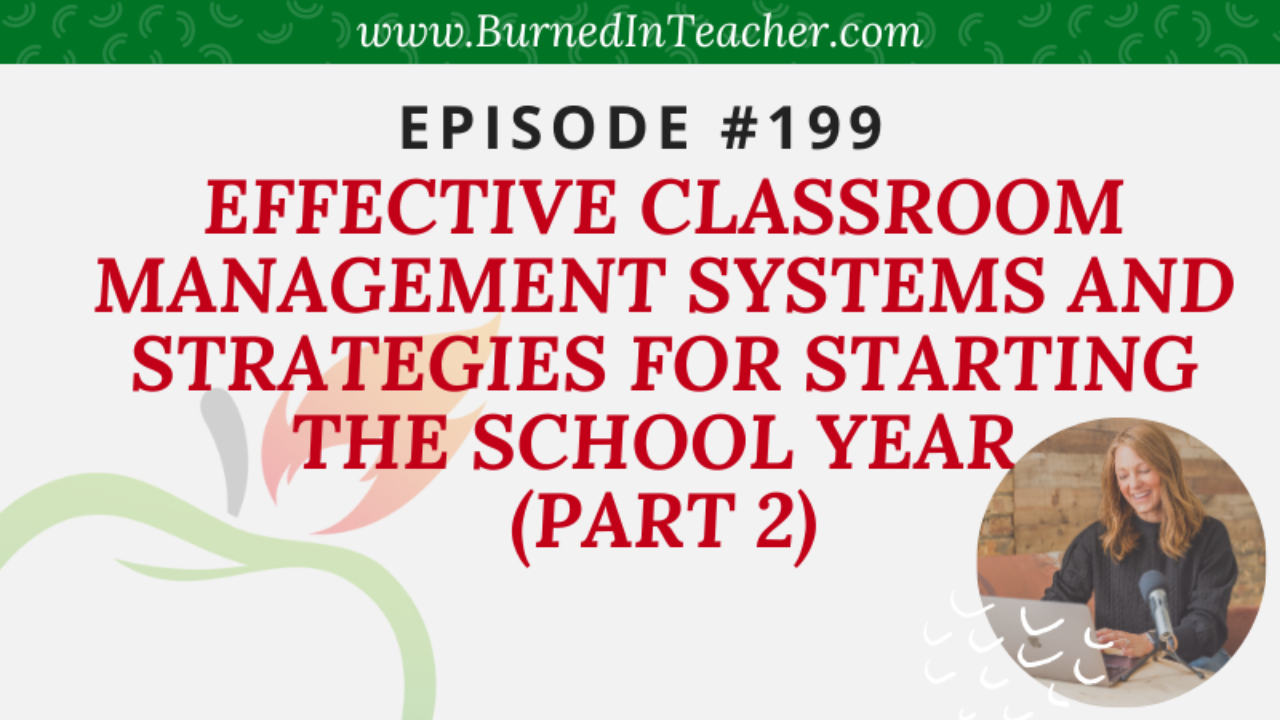
Effective Classroom Management Systems and Strategies for Starting the School Year (Part 2)
As educators, we know that successful classroom management is the foundation of a productive learning environment. It sets the stage for meaningful teaching and learning to take place. If you're gearing up for a new school year or already knee-deep in the current one, you might have encountered the challenges of maintaining order in your classroom. Repeating instructions endlessly and constantly dealing with disruptions can be frustrating and overwhelming. In this blog post, we're diving into the second part of a three-part series that outlines a simple and effective approach to managing your classroom. If you missed Episode 198, where we discussed the core rules for setting expectations, consider giving it a listen for a comprehensive understanding of the foundation we're building upon.
Morning Meeting: Your Secret Weapon
Are you skeptical about the concept of a morning meeting? You're not alone. I used to raise an eyebrow at the thought of fitting another activity into my already-packed schedule. But here's the thing: morning meetings can be a game-changer for classroom management. By dedicating a short time each morning, you set the tone for the day and build a sense of community among your students.
Creating the Structure:
- Circle Time: Gather your students in a circle (or any arrangement that suits your classroom).
- Morning Song: Start with a familiar morning song or routine to signal the beginning of the meeting.
- Check-In: Prompt students to share how they're feeling that day. This fosters emotional awareness.
- Greeting: Encourage students to greet one another, promoting respect and kindness.
- Teacher's Message: Share important information or plans for the day, and end with a positive message.
Teaching Integrity Traits:
The core of your morning meeting revolves around reinforcing positive behaviors through the lens of integrity traits. Choose one trait to focus on each day, such as "be respectful," "be responsible," "be safe," "be kind," and "be patient." Use these steps to teach, review, and reinforce the chosen trait:
- Discussion: Engage students in a conversation about what the trait means and looks like in action.
- Turn and Talk: Encourage students to discuss their thoughts and ideas with a partner.
- Modeling: Select volunteers to act out scenarios that embody the trait, both in positive and negative ways.
- Guided Practice: Have students demonstrate the trait through role-play and interactive exercises.
- Classroom Goal: Set a collective goal for the day, focusing on the chosen integrity trait.
Closing Circle: The Magic Culmination
At the end of the day, reconvene for a closing circle to wrap up the lessons and experiences of the day. This can be done in various formats, but the key is to reinforce positive behavior and acknowledge students' efforts.
- Classroom Goal Reflection: Discuss whether the class met the set goal and share examples of respectful behavior.
- Top Two: Recognize two students who stood out in exhibiting the integrity trait of the day.
Implementing these routines might feel mundane at first, but the magic lies in consistency and predictability. Students start looking forward to these interactions, fostering a sense of belonging and understanding the expectations you've set.
If you're intrigued and eager to learn more about how to effectively manage your classroom, consider joining our two-hour workshop. Delve into a step-by-step process to ensure a classroom community that promotes positive behaviors and sets both you and your students up for success.
Classroom management doesn't have to be a constant struggle. By incorporating structured routines like morning meetings and closing circles, you create a foundation of understanding, respect, and responsibility. The key is to make these routines a part of your daily practice, guiding your students toward a community of learners who thrive on mutual support and positive behavior. In the next part of this series, we'll explore how to reinforce positive behaviors using positive behavior intervention support (PBIS) techniques. Stay tuned for more insights on building a harmonious and productive classroom environment.
Call to Action: Things You Can Do Tomorrow
- Implement Engaging Morning Meetings: Begin each day with a structured and engaging morning meeting that reinforces the established rules. Use this time to discuss and model behavior, allowing students to actively participate in scenarios that showcase respectful actions.
- Reinforce Positive Behavior: Throughout the day, actively observe and reinforce positive behavior that aligns with the classroom rules. Use praise, recognition, and positive reinforcement to encourage students to consistently demonstrate respect, responsibility, safety, kindness, and patience.
- Implement Closing Cirlces: Conclude each day with a closing circle that reinforces positive behavior and lessons learned throughout the day. Review the classroom goals and acknowledge students who demonstrated respectful actions.
Resources Mentioned in This Episode
- CLICK HERE TO JOIN THE CLASSROOM MANAGEMENT WORKSHOP
- Ep 129: Transforming the Classroom with My Disruptive Behavior Solution (Part 1)
- Ep 198: Effective Classroom Management Systems and Strategies for Starting the School Year (Part 1)






